This figure shows that, according to Snell's Law, the angle of refraction differ for different indexes.
Chromatic Aberration occurs because of dispersion. Dispersion is the change
in refractive index due to changing wavelength. The images formed from these different colours of
light are not coincident. There are two effects of chromatic abberation
1) Longitudinal displacement of the image along the optic
axis ( Longitudinal Chromatic Abberation)
2) Variation in image size with color (Lateral Chromatic Abberation)
This figure shows that, according to Snell's Law, the angle of refraction differ for different
indexes.
A white object will not give rise to a white image but it will be distorted and have rainbow edges.
Connecting Wavelength to Indexes
Applying Huyen's Principle to Snell's Law :
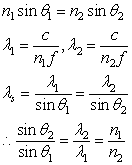
Using Linear Aproximation to illustrate Chromatic Aberration
We are going to find the matrices of a simple lens system and then determine the focal length
with a given radii, distance between the lenses, and other information to shop that focal point differs
for different wavelength
The Lens System Matrices
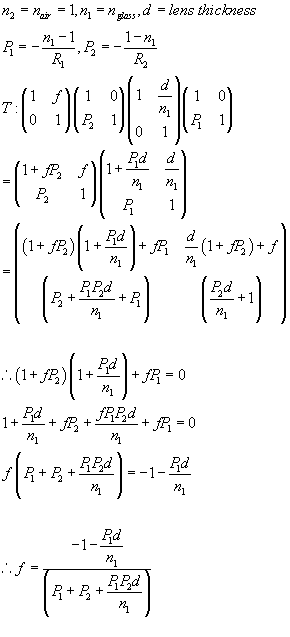
Examples
Example 1
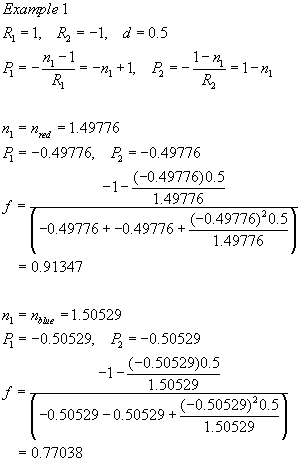
Example 2
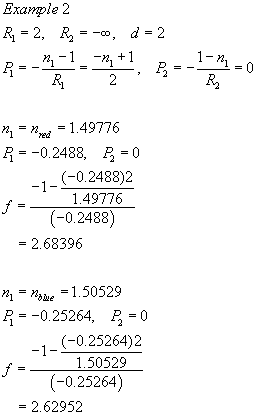
We have shown that the focal point is different for different colour due to the wavelength.
Correcting Chromatic Abberation:
Chromatic aberration can be eliminated by making multiple refracting elements
with opposite power (Pedrotti). The most common solution is making a achromatic doublet, consisting a convex
and a concave lens, of different glasses. For example, using a crown glass equiconvex lens to a negative flint glass lens.
Design for thin len:
The matrix for thin len convex len is:


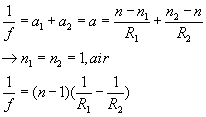
We are going to apply these equation to the sample achromatic doulet and figure out the lens design.
The Fraunhofer wavelength we are going to use is D - yellow colour. Therefore, the index of refraction
n is for the wavelength D.
The power of the two lens are

We know that the power of a doublet with a distance of L is
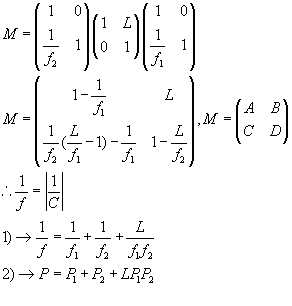

According to Blaker(p. 71), the dispersive power is v and dispersive constant V

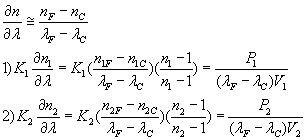
We want
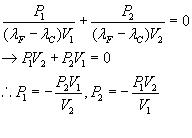
We have to determine each individual len power in term of the desire power P
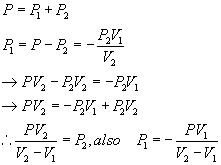
Finally, from the equation above, we can now determine the curvature K and the four radii.
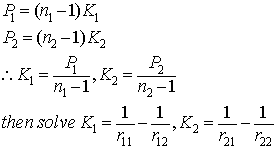
Achromatizing thin lens will result in a nearly equal focal lengths(focal length for red nearly equal
to focal length for blue), eliminate longitudinal and later aberration at the same time, i.e will coincide.
But the problem with thick len is that equal focal lenghts may not coincide as thin len. If we change the focal lengths
for red and blue, resulting in a different later magnification and therefore lateral chromatic aberration remains. According to
Pedrotti, the condition to remove lateral chromatic aberration is "the coincidence of the principal
planes for the corrected wavelengths" (Pedrotti, p.104).